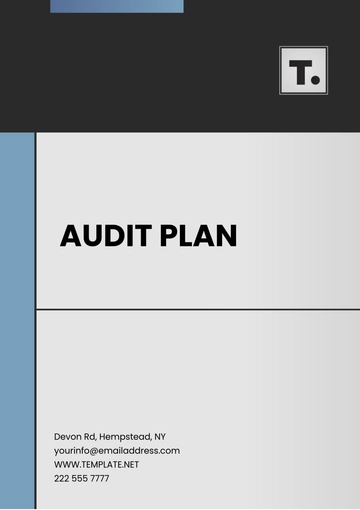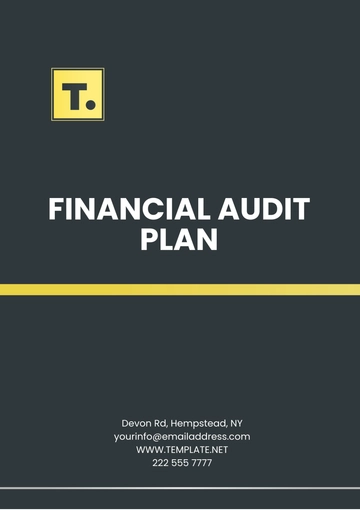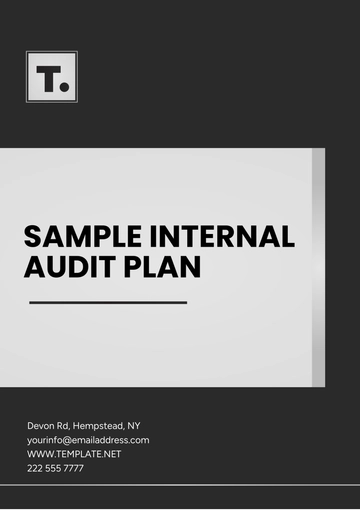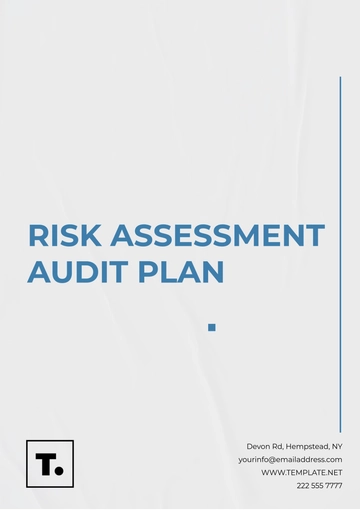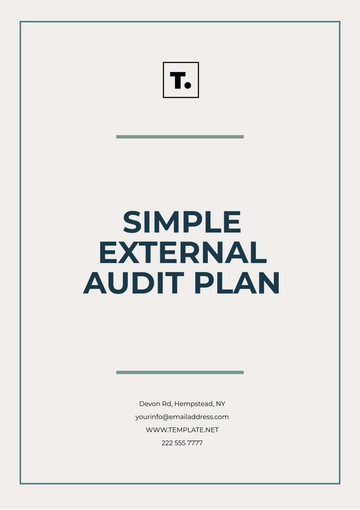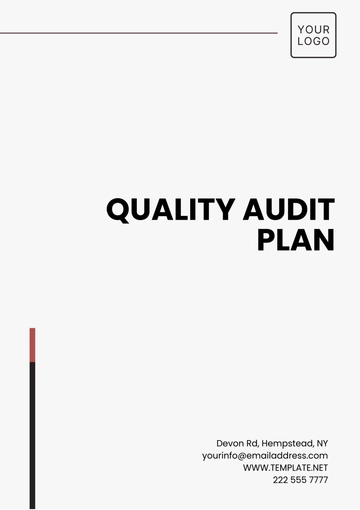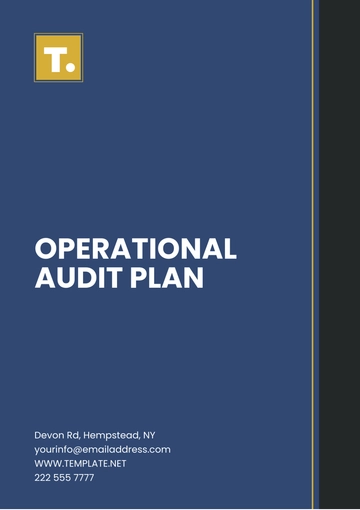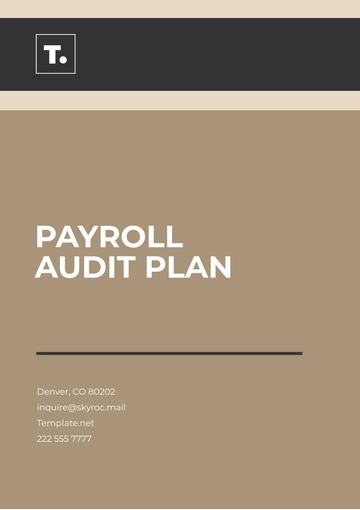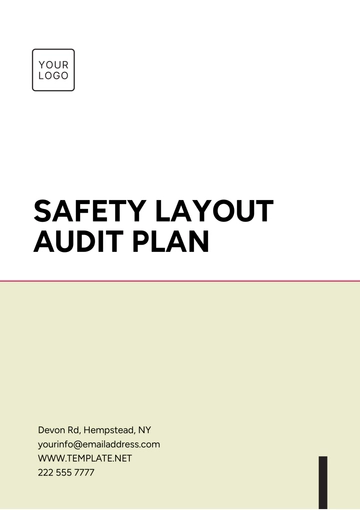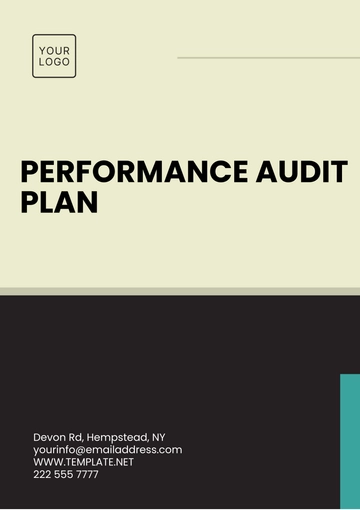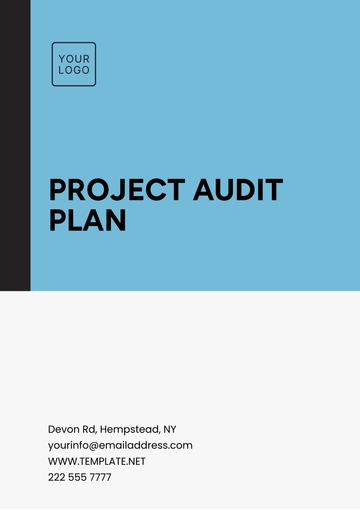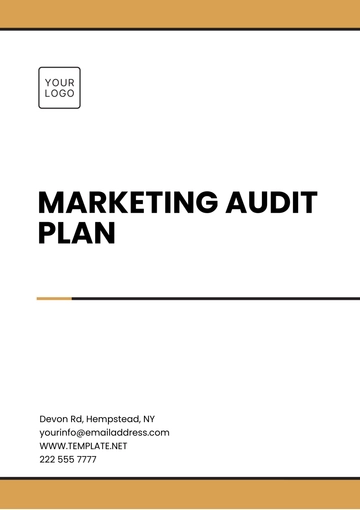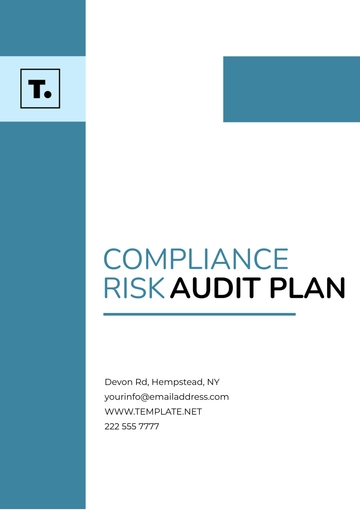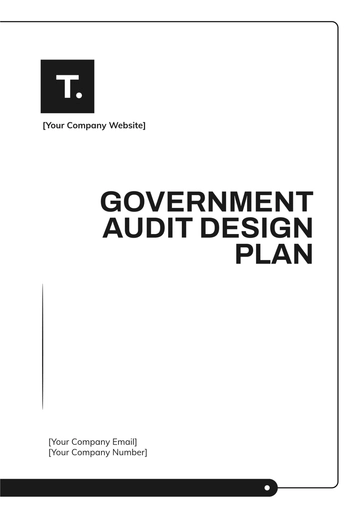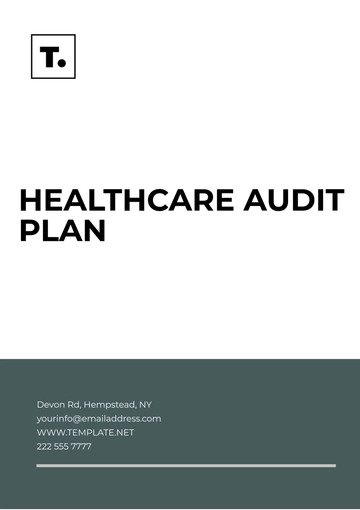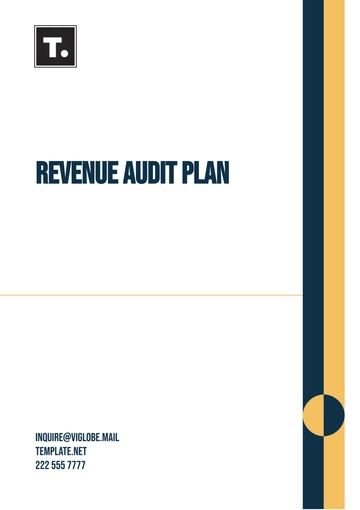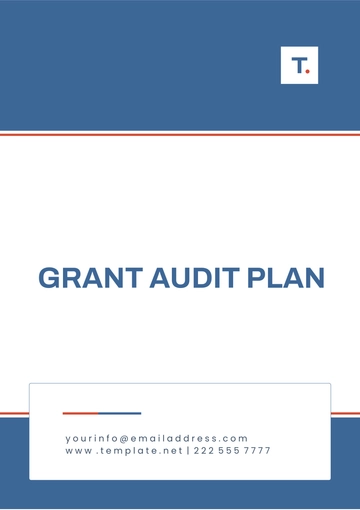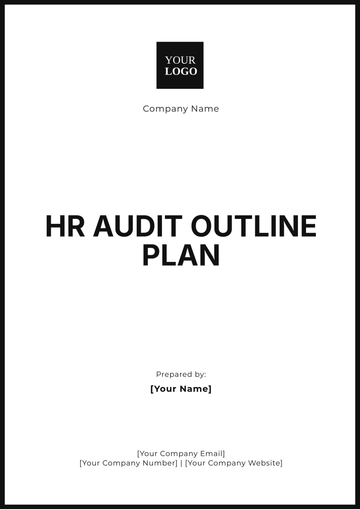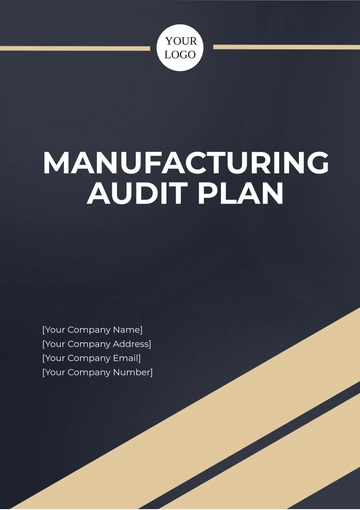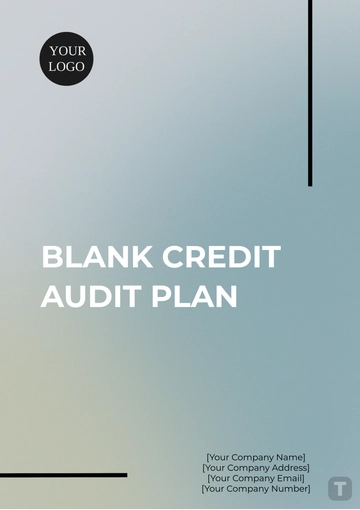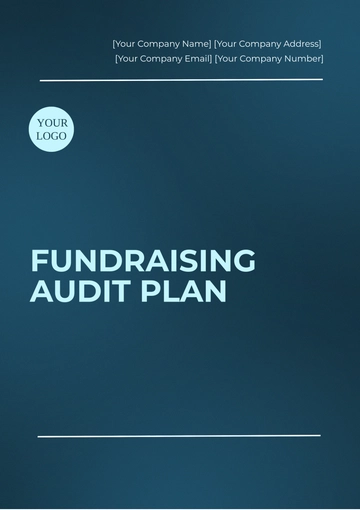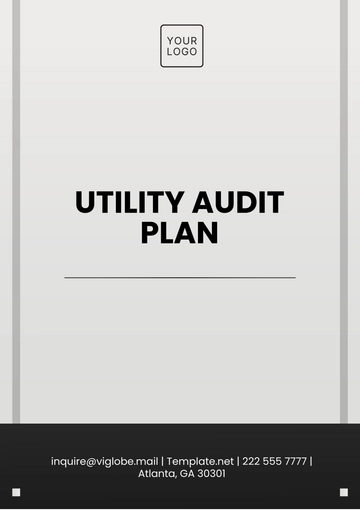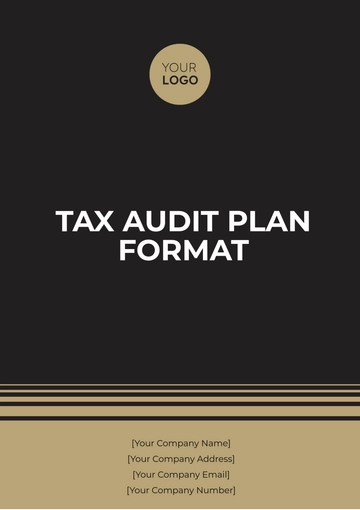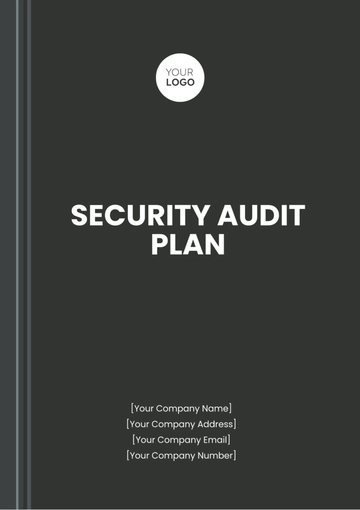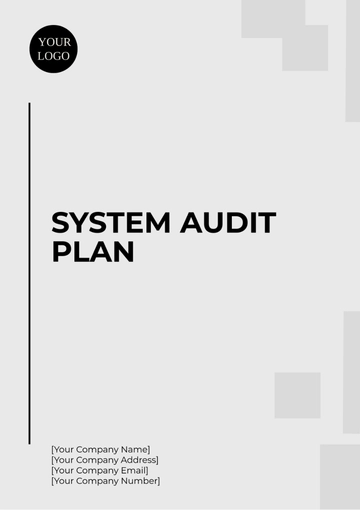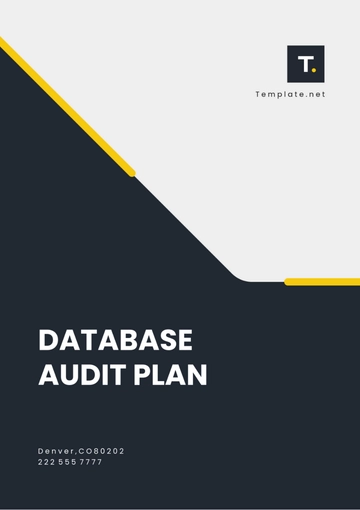Free Financial Audit Plan
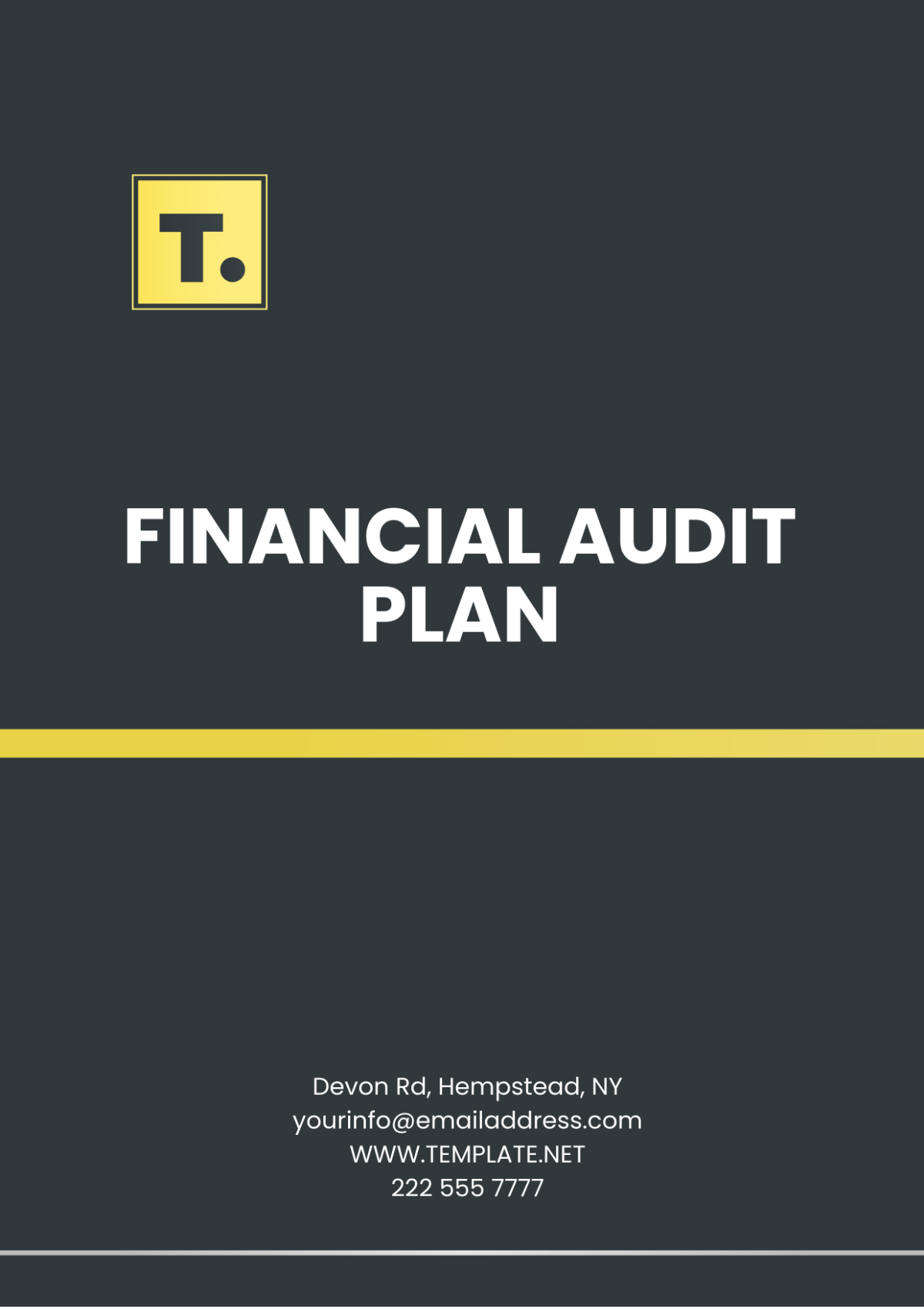
Audit Period: January 1, 2060 – December 31, 2060
Prepared by: [Your Company Name]
Prepared for: [Client Company Name]
Date of Preparation: January 5, 2060
1. Introduction
This Financial Audit Plan outlines the strategy for conducting a comprehensive audit of the financial statements of [Client Company Name] for the fiscal year ending December 31, 2060. The purpose of this audit is to obtain reasonable assurance that the financial statements are free from material misstatement, whether due to fraud or error and to ensure compliance with regulatory and internal financial policies.
2. Objectives
The primary objectives of this audit are:
To verify the accuracy and completeness of [Client Company Name]'s financial statements for the year 2060.
To assess the effectiveness of the internal controls over financial reporting.
To ensure that the financial statements comply with generally accepted accounting principles (GAAP) and international financial reporting standards (IFRS).
To identify any risks of material misstatements and to ensure appropriate corrective actions are implemented.
3. Audit Scope
The audit will cover all material aspects of [Client Company Name]’s financial operations for the period from January 1, 2060, to December 31, 2060. This includes, but is not limited to:
Revenue Recognition: Assess the accuracy of revenue reported and its compliance with accounting standards.
Expenses: Review the classification and recording of expenses.
Asset Valuation: Verify the existence and valuation of physical and intangible assets.
Liabilities: Ensure proper disclosure and valuation of liabilities.
Cash Flow: Assess cash flow management and ensure proper classification.
Internal Controls: Test the effectiveness of internal control systems that safeguard assets and ensure financial integrity.
4. Key Audit Areas
To ensure an efficient and effective audit process, the following key areas will be prioritized:
Revenue and Sales Cycles: Examine sales documentation, revenue recognition policies, and outstanding receivables.
Inventory Management: Audit the accuracy of inventory counts and valuation, including checks for obsolete or slow-moving stock.
Accounts Payable & Receivable: Validate that accounts payable and receivable are accurately recorded and aged appropriately.
Fixed Assets: Verify the physical existence of key assets and assess any depreciation or impairment.
Risk of Fraud: Evaluate the controls in place to mitigate fraud, including any unusual transactions or override of controls.
5. Audit Methodology
The audit will be conducted using a risk-based approach. Our methodology involves:
Preliminary Risk Assessment: Identification of potential risks in significant areas such as revenue recognition and inventory valuation.
Analytical Procedures: Conducting analytical reviews of financial information to identify unusual variances.
Testing of Controls: Reviewing and testing key controls over financial reporting.
Substantive Procedures: Performing detailed testing of transactions, account balances, and disclosures.
Conclusion: Preparing an audit opinion based on the evidence gathered throughout the process.
6. Audit Timeline
Milestone | Expected Date |
|---|---|
Audit Planning and Risk Assessment | January 15, 2060 |
Fieldwork Begins | February 1, 2060 |
Interim Reporting | June 1, 2060 |
Final Audit Testing | November 15, 2060 |
Draft Audit Report | December 1, 2060 |
Final Audit Report Issuance | December 15, 2060 |
7. Audit Team
The audit will be conducted by the following key personnel from [Your Company Name]:
Audit Partner: Partner Name, CPA, who will oversee the audit strategy and ensure quality control.
Audit Manager: Manager Name, responsible for managing the audit team and coordinating fieldwork.
Audit Senior: Senior Name, leading the day-to-day audit activities and reporting progress.
Audit Staff: Staff Names, performing audit procedures and assisting with data analysis.
8. Client Responsibilities
To facilitate a smooth audit process, [Client Company Name] is expected to provide:
Access to Records: All financial records, documentation, and supporting evidence for the period.
Internal Contacts: Designated personnel to assist with queries and provide information.
Internal Control Documentation: Details of internal control procedures and compliance policies.
Timely Responses: Prompt responses to audit requests and inquiries.
9. Deliverables
The deliverables for this audit will include:
Audit Opinion: A formal opinion on whether the financial statements of [Client Company Name] present a true and fair view of its financial position.
Management Letter: A report identifying any control weaknesses and recommendations for improvement.
Audit Report: A comprehensive report detailing the findings and conclusions of the audit.
10. Conclusion
The audit of [Client Company Name] for the fiscal year ending December 31, 2060, will be conducted following the audit standards of [Regulatory Authority] and will aim to provide a fair and independent assessment of the company's financial statements. [Your Company Name] is committed to ensuring a transparent, efficient, and thorough audit process, while maintaining the highest level of professional integrity and confidentiality.
Signatures
Audit Partner:
 [Your Name], CPA
[Your Name], CPA
Date: January 5, 2060
Client Representative:
 [Client Representative Name]
[Client Representative Name]
Title: Client Representative Title
Date: January 6, 2060
- 100% Customizable, free editor
- Access 1 Million+ Templates, photo’s & graphics
- Download or share as a template
- Click and replace photos, graphics, text, backgrounds
- Resize, crop, AI write & more
- Access advanced editor
Our Financial Audit Plan Template from Template.net offers a customizable and structured framework for your financial auditing tasks. Editable in our Ai Editor Tool, this template helps ensure accuracy and compliance. Tailor it to fit your unique auditing needs for a seamless financial audit process, making preparation simple and effective.
You may also like
- Finance Plan
- Construction Plan
- Sales Plan
- Development Plan
- Career Plan
- Budget Plan
- HR Plan
- Education Plan
- Transition Plan
- Work Plan
- Training Plan
- Communication Plan
- Operation Plan
- Health And Safety Plan
- Strategy Plan
- Professional Development Plan
- Advertising Plan
- Risk Management Plan
- Restaurant Plan
- School Plan
- Nursing Home Patient Care Plan
- Nursing Care Plan
- Plan Event
- Startup Plan
- Social Media Plan
- Staffing Plan
- Annual Plan
- Content Plan
- Payment Plan
- Implementation Plan
- Hotel Plan
- Workout Plan
- Accounting Plan
- Campaign Plan
- Essay Plan
- 30 60 90 Day Plan
- Research Plan
- Recruitment Plan
- 90 Day Plan
- Quarterly Plan
- Emergency Plan
- 5 Year Plan
- Gym Plan
- Personal Plan
- IT and Software Plan
- Treatment Plan
- Real Estate Plan
- Law Firm Plan
- Healthcare Plan
- Improvement Plan
- Media Plan
- 5 Year Business Plan
- Learning Plan
- Marketing Campaign Plan
- Travel Agency Plan
- Cleaning Services Plan
- Interior Design Plan
- Performance Plan
- PR Plan
- Birth Plan
- Life Plan
- SEO Plan
- Disaster Recovery Plan
- Continuity Plan
- Launch Plan
- Legal Plan
- Behavior Plan
- Performance Improvement Plan
- Salon Plan
- Security Plan
- Security Management Plan
- Employee Development Plan
- Quality Plan
- Service Improvement Plan
- Growth Plan
- Incident Response Plan
- Basketball Plan
- Emergency Action Plan
- Product Launch Plan
- Spa Plan
- Employee Training Plan
- Data Analysis Plan
- Employee Action Plan
- Territory Plan
- Audit Plan
- Classroom Plan
- Activity Plan
- Parenting Plan
- Care Plan
- Project Execution Plan
- Exercise Plan
- Internship Plan
- Software Development Plan
- Continuous Improvement Plan
- Leave Plan
- 90 Day Sales Plan
- Advertising Agency Plan
- Employee Transition Plan
- Smart Action Plan
- Workplace Safety Plan
- Behavior Change Plan
- Contingency Plan
- Continuity of Operations Plan
- Health Plan
- Quality Control Plan
- Self Plan
- Sports Development Plan
- Change Management Plan
- Ecommerce Plan
- Personal Financial Plan
- Process Improvement Plan
- 30-60-90 Day Sales Plan
- Crisis Management Plan
- Engagement Plan
- Execution Plan
- Pandemic Plan
- Quality Assurance Plan
- Service Continuity Plan
- Agile Project Plan
- Fundraising Plan
- Job Transition Plan
- Asset Maintenance Plan
- Maintenance Plan
- Software Test Plan
- Staff Training and Development Plan
- 3 Year Plan
- Brand Activation Plan
- Release Plan
- Resource Plan
- Risk Mitigation Plan
- Teacher Plan
- 30 60 90 Day Plan for New Manager
- Food Safety Plan
- Food Truck Plan
- Hiring Plan
- Quality Management Plan
- Wellness Plan
- Behavior Intervention Plan
- Bonus Plan
- Investment Plan
- Maternity Leave Plan
- Pandemic Response Plan
- Succession Planning
- Coaching Plan
- Configuration Management Plan
- Remote Work Plan
- Self Care Plan
- Teaching Plan
- 100-Day Plan
- HACCP Plan
- Student Plan
- Sustainability Plan
- 30 60 90 Day Plan for Interview
- Access Plan
- Site Specific Safety Plan
